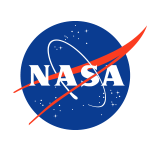Improved Trajectory Search Capability for Multi-Rendezvous and Flyby Missions (NELLS)
Project Description

This work made vital improvements to a primitive trajectory search algorithm known as NASA Exhaustive Lambert Lattice Search (NELLS). NELLS was created to work hand in hand as an initial guess generator for one of Goddard’s primary preliminary design tools, EMTG, however NELLS currently lacks the capability necessary to design missions as the bodies visited increases.
Trajectory design involving high order (> 5) planetary, moon and small body flybys and rendezvous are exponentially more mathmatically complex than simpler ones. The objectives of this work were:
- Improve the speed of trajectory generation by a factor of two for simple cases and an order of magnitude for complicated cases (trajectories that visit > 5 bodies). The runtime in NELLS for individual, complex cases was as high as two weeks. A more effective search algorithm, using modern computational science techniques--implemented in this work--reduced run times significantly, allowing more cases to be computed.
- Create capability to rapidly generate multi-body trajectories which use deep-space maneuvers. Previously, NELLS was only capable of modeling four types of propulsion system impulses: launch, rendezvous arrival, rendezvous departure, and powered planetary flyby. These maneuver types cover a wide-range of missions, but there are some missions that simply cannot be flown without firing the spacecraft’s propulsion system when not in proximity of a celestial body. Modeling of these so-called deep-space maneuvers is much more complex as there is no deterministic way of selecting the timing, size, and direction for every possible maneuver. However, a grid-search approach to placing such maneuvers provides a useful sample of the design space, which can later be optimized in other tools, and it is extremely important that such DSMs be considered, as they enable many mission designs to destinations such as the outer planets, and asteroids.
Anticipated Benefits
NELLS is now capable of automating a significant portion of trajectory design, which significantly decreases the time required for engineers to design missions in early phases. The new capability also allows engineers to investigate a much larger portion of the trajectory design space than was possible with the previous versions of NELLS.
More »Project Library
Primary U.S. Work Locations and Key Partners
| Organizations Performing Work | Role | Type | Location |
|---|---|---|---|
 Goddard Space Flight Center
(GSFC)
Goddard Space Flight Center
(GSFC)
|
Lead Organization | NASA Center | Greenbelt, Maryland |
| Co-Funding Partners | Type | Location |
|---|---|---|
| University of Illinois at Urbana-Champaign | Academia | Urbana, Illinois |
Primary U.S. Work Locations
-
Illinois
-
Maryland


